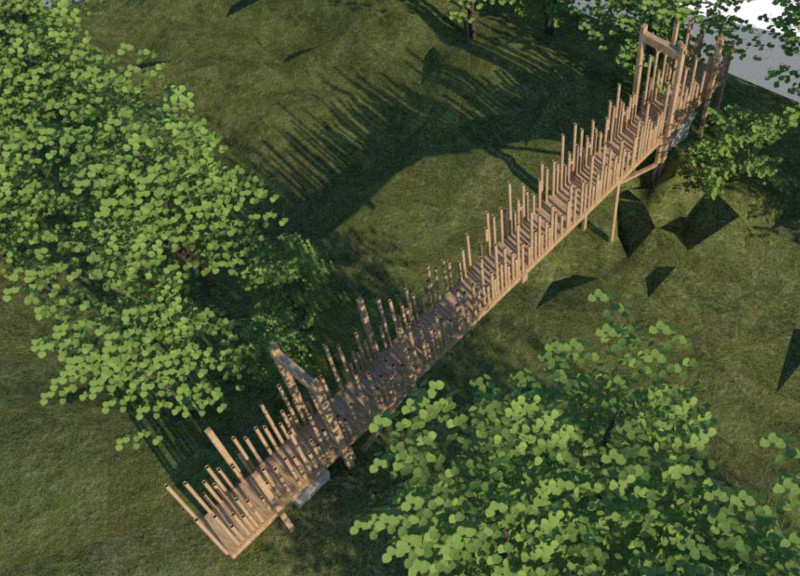5 key facts about this project
The project focuses on a bridge located within the green forests of Latvia, connecting visitors to a national park. It serves a dual purpose as a functional crossing and a design that merges with its natural surroundings. The bridge is designed to feel like a part of the forest, allowing elements of nature to influence its shape and appearance.
Integration with Nature
The central idea of the design is to connect the bridge closely with the existing environment. By allowing trees and plants to wrap around and rise over the bridge, the design creates a unique interaction between the built structure and the landscape. As visitors approach, they experience a blend of the path through the forest and the act of crossing the bridge.
Materiality and Structural Choices
Specific materials are chosen to support both the function and beauty of the bridge. Steel cables are used for strength, allowing the bridge to maintain a light and unobtrusive form. Timber batons and a wooden boardwalk provide a warm path for users, connecting them to the forest below. Concrete pads ensure a stable foundation, while piles dig into the ground to avoid disrupting the roots of nearby trees, preserving the existing ecology.
Ecological Considerations
The design encourages wildlife to thrive alongside the bridge. It aims to harmonize with nature, allowing plants to grow on and around the structure over time. This thoughtful approach highlights commitment to protecting the environment. The bridge does more than connect two points; it also integrates with the ecosystem it resides in.
User Experience
Visitors are offered a unique experience as they cross the bridge, engaging actively with their surroundings. The mix of materials promotes a connection to the forest, making each step a part of the journey. Traversing this bridge becomes an opportunity to appreciate the natural world and the beauty it holds.
The design culminates in a thoughtful blend of timber and landscape, allowing the forest to reclaim some of its space while creating a path for those wishing to explore.





















































